City Park
Introduction
Text-to-speech Audio
Images
City Park (image from the City of Denver)
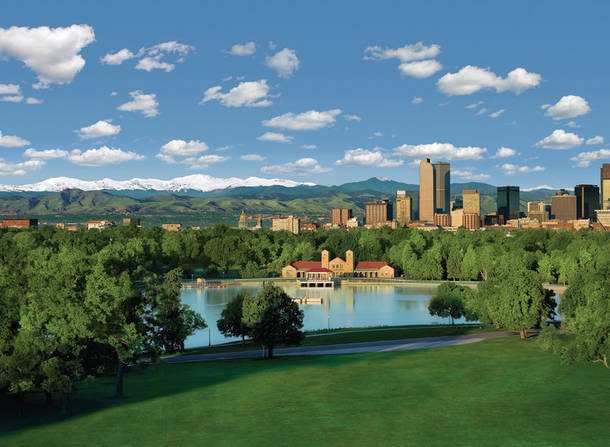
Thatcher Fountain of City Park (image from Panoramio)
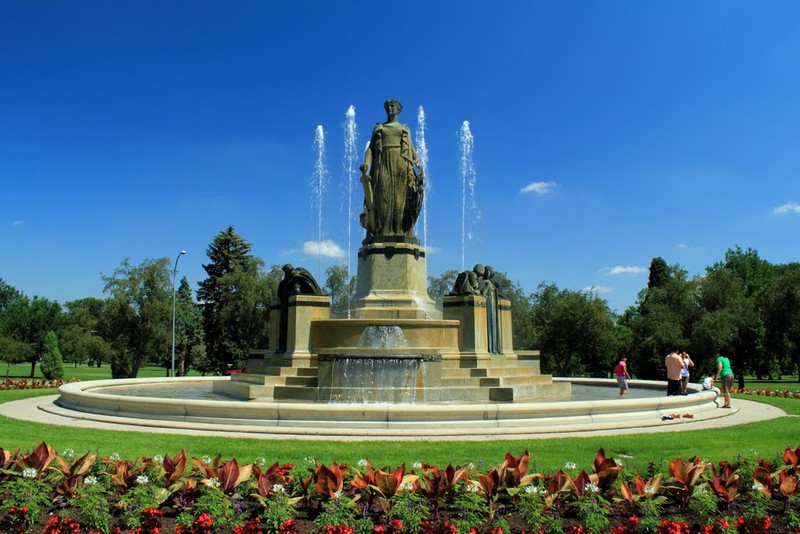
City Park Fishing Fountain (image from Colorado Outdoors Magazine)
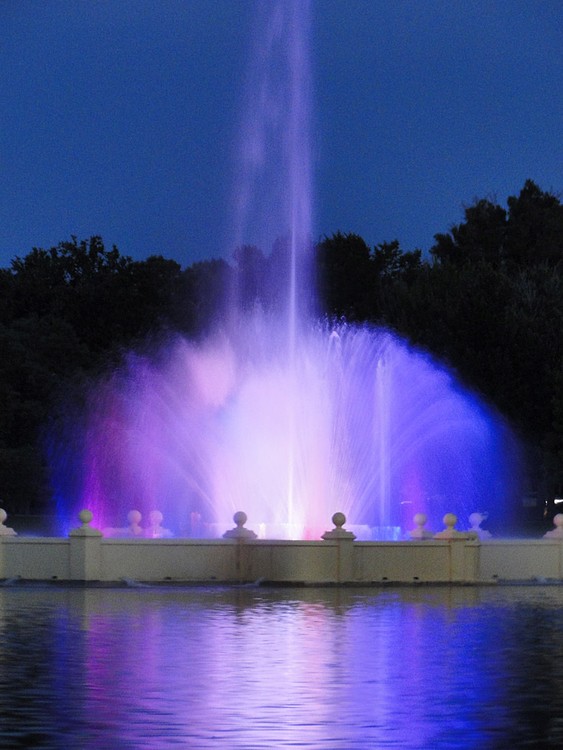
Martin Luther King Statue (image from Panoramio)
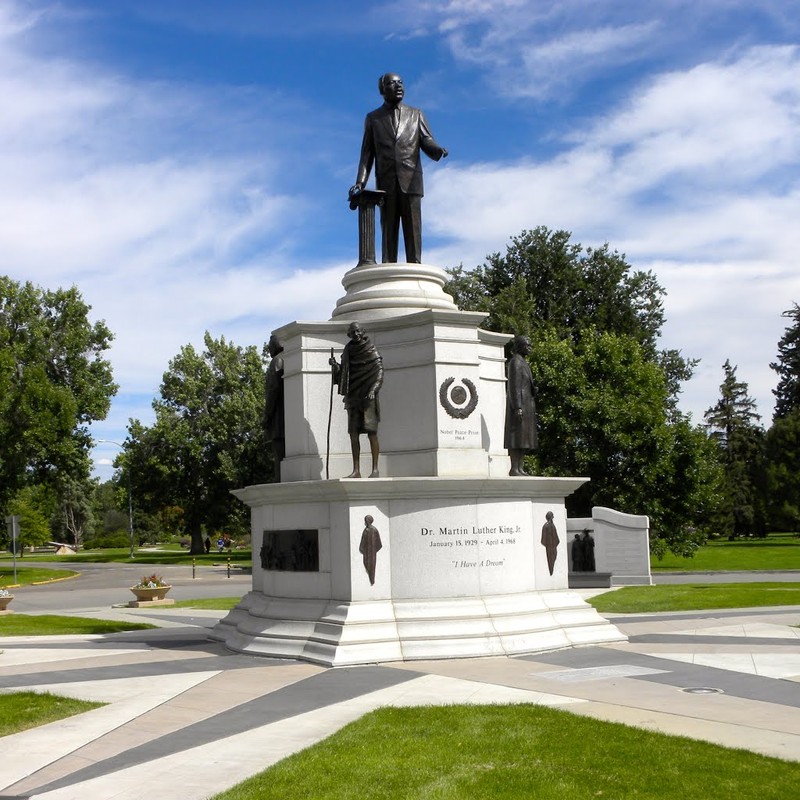
Robert Burns statue with autumn foliage (image from Expedia)
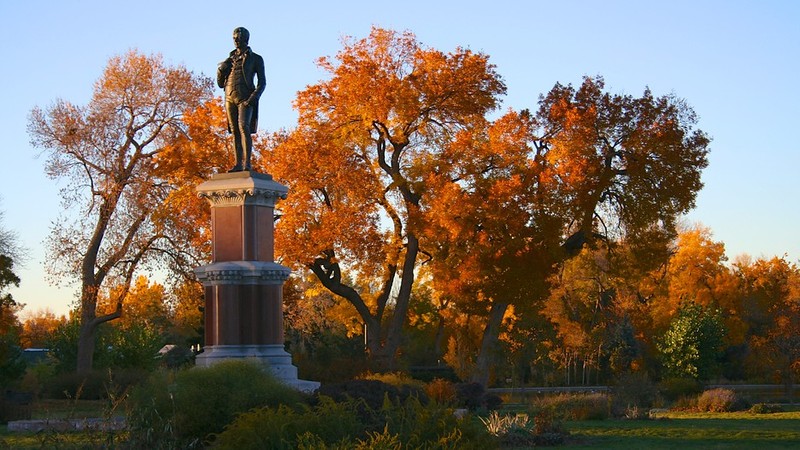
Sullivan Gateway of City Park (image from the Denver Post)
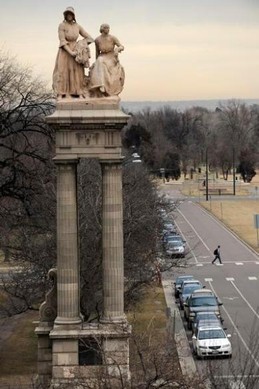
The Sullivan Gateway circa 1930 (image from Route40.com)

McClellan Gateway of City Park (image from AllPosters.com)
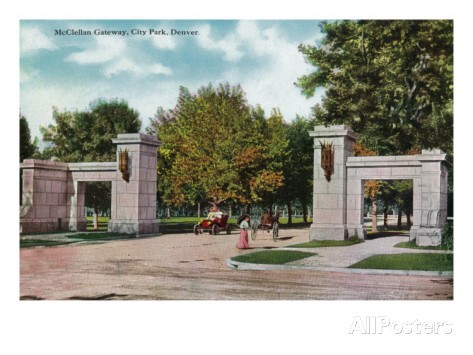
Backstory and Context
Text-to-speech Audio
In 1880, the City of Denver purchased prairie land for the creation of City Park. Civil engineer Henry F. Meryweather designed the park in the Olmsted tradition, using New York City's Central Park as the model for his park's curving roads, water features, and scenic vistas. Over 600 trees were planted across 80 acres of the park by 1890, watered by a natural drainage course which crosses the park lengthwise. The north section of the park (where the zoo, museum, and many of the sports fields border City Park Golf Course) was dedicated to activities which have changed over the years, and the south section, which remains largely unchanged, was designated as a passive landscape. At the turn of the century, Reinhard Schuetze redesigned portions of the park, and in the 1920s S. DeBoer made additional changes.
The Sullivan Memorial Gateway was added at the City Park Esplanade entrance, near the Thatcher Memorial Fountain, in 1917. The gateway was designed by Chicago architect Edward Herbert Bennett, and features pioneer women and miners representing Colorado's first two industries sculpted by New Yorker Leo Lentelli atop freestanding Doric columnns. On one side, a man and boy representing Mining stand on one tall pedestal. On the other, a woman in a sunbonnet and a girl with a basket of grain representing Agriculture. The gateway was installed as part of the City Beautiful movement. It was designed by Robert Willison of Denver. John Clark Mitchell donated funds to erect it in memory of banker Dennis Sullivan.
The elaborate Thatcher Memorial Fountain, featuring a bronze woman holding a sword and shield, came a year later, and was sculpted by Lorado Raft of Chicago. The woman represents The State, and additional figures on the fountain represent Love, Learning, and Loyalty. The Sopris Gateway at East 17th Avenue is a red sandstone pedestrian and, at the time, trolley entrance designed by Frank E. Edbrooke (architect of Denver's Brown Palace Hotel) and created by local contractors including Colorado Red Sandstone Company, lamps by Verdeckberg & Burkhardt, and Silver State Electric Company. The 1903 McLellan Gateway, originally located at East 18th Avenue on the west side of the park, was moved to the East 21st Avenue entrance in 1957 to alleviate traffic problems. William McLellan, a Blacksmith and member of the Denver City Council, is said to have donated half his life savings to the park. The gateway named for him was designed by Edward H. Moorman, and its new location puts it next to the 1892-1893 park superintendent's residence and carriage house, first occupied by Alexander J. Graham. The pink granite Monti Gateway on the east side of the park was designed by Richard Phillips in 1917 [2].
From 1892 until 1950, the park featured a racetrack managed by the Gentlemen's Driving & Riding Club. Other activity centers in the north section of the park include the zoo, museum, ball fields, a general recreation area, and playgrounds. Some of the historic buildings in this section include a 1912 fire station, the park nurseries and 1895 greenhouse, two 1930s WPA-built warehouses, three red brick barns dating to the 1880s-1904, the historic section of the Denver Zoo (including the 1918 Bear Mountain exhibit and one of the three barns previously mentioned, which is now the Monkey House). In 1918, the park's nurseries comprised over 60,000 trees, 23,000 perennials, and 23,000 cuttings and seedlings [2].
Originally, the park's pavilion was constructed at Duck Lake, but was replaced in 1896 by a pavilion on Ferril Lake, which, in turn, was replaced by the present City Park Pavilion in 1929 on the same site. The current Pavilion was designed by William E. Fisher and John H. Humphreys, in the style of a rural Italian Renaissance villa. On the side of the pavilion opposite the lake, a formal flower garden surrounds a 1925 memorial to Elizabeth Ellen Sopris. Other park monuments include the 1897 Grand Army of the Republic trio of cannons, 1904 bronze of Robert Burns and the formal Burns Garden, 1906 Colonial Dames Sundial and Sons of Colorado Flagpole, the 1912 Children's Fountain, the 1930 Grizzly's Last Stand sculpture, and the 1976 monument to Martin Luther King, Jr. Other features include vast forested areas, an open meadow, plaza, boathouse, lily pond, playground and bandstand. The lake, created in 1887, became home to a prismatic fountain, designed by F. W. Darlington of the Denver & Interurban Railroad Company, in 1908. The fountain was restored in 1983. Between the two lakes stands the 1906-1908 Pumping Plant which was home to the Denver Zoo's first elephant in the 1950s [2].
Sources
1. City of Denver. "City Park." Accessed June 29, 2016. Denver Parks and Recreation. http://www.denvergov.org/content/denvergov/en/denver-parks-and-recreation/parks/find-a-park.html.
2. Etter, Don. "Denver Park and Parkway System." National Park Service, National Register of Historic Places. March, 1986. Accessed June 27, 2016. http://focus.nps.gov/GetAsset?assetID=ab28bdc4-d33c-47ce-ac37-ca4a6a7b5498.
